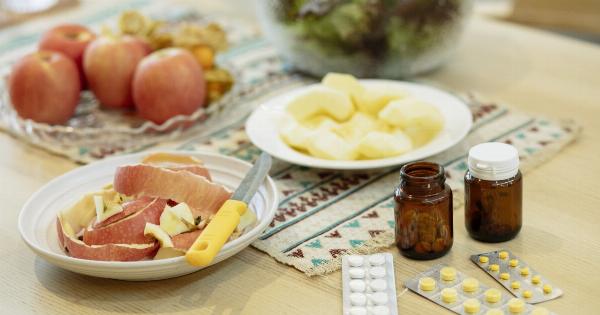Easter celebrations are often synonymous with indulgent meals, sweet treats, and candy-filled baskets.
It’s understandable to want to indulge a little on this special occasion, but it’s also essential to maintain a balanced and healthy diet, especially the day after. As a dietitian, here are my top tips for a post-Easter plate.
1. Start with a Fiber-Rich Breakfast
After a day of indulging in sugar, salt, and fat, your body needs to hit the reset button, and a fiber-rich breakfast is the perfect way to do so.
Incorporate a mix of complex carbohydrates such as whole-grain toast, fruit, and protein sources like eggs or Greek yogurt. Adding some spinach or kale to your eggs or smoothies can also provide an extra boost of fiber and vitamins.
2. Hydration is Key
Don’t forget to hydrate your body after a day of indulgence. Drinking plenty of water is essential as it will help flush toxins out of your system and keep you feeling refreshed and rejuvenated.
Opt for sparkling water or herbal tea if plain water doesn’t entice you.
3. Fill Up on Veggies
A great way to detox your system is by filling up on fiber-rich veggies. Add some color to your plate with a mix of greens such as kale, broccoli, Brussels sprouts, asparagus, and spinach.
These veggies are not only packed with fiber, but they’re also high in essential vitamins and minerals that are depleted after a day of indulgence.
4. Keep Your Protein Lean
Easter often entails consuming heavier meats such as lamb or ham, but the day after it’s time to give your digestive system a break and opt for leaner protein choices.
Incorporate white meat such as chicken or turkey into your meals and include plant-based sources such as beans or lentils. This will help keep your body feeling energized without being overloaded with fats or salt.
5. Don’t Forget the Healthy Fats
Healthy fats are crucial for maintaining good health, so don’t cut them out entirely from your post-Easter plate.
Avocado, nuts, seeds, and oily fish such as salmon are excellent sources of healthy fats that will keep you satiated and energized throughout the day. Be mindful of portions, and don’t overdo it as healthy fats are still high in calories.
6. Skip the Leftovers
While it may be tempting to indulge in leftover Easter treats, it’s best to avoid them altogether.
These leftovers are often high in sugar, salt, and fat, which will only hinder your post-Easter detox goals and leave you feeling sluggish and tired. Stick to clean, whole foods to fuel your body and satisfy your hunger.
7. Practice Mindful Eating
Eating mindfully is key to maintaining a healthy diet and lifestyle. Listen to your body, and eat when you’re hungry, but stop when you’re full.
Avoid distractions while you’re eating, such as being on your phone or watching TV, as this will disconnect you from your body’s hunger cues.
8. Cook at Home
Investing time in cooking at home is a great way to control the ingredients and portions in your meals. Not only will you save money on eating out, but you’ll also have full control of what goes into your plate.
Preparing meals in advance can also save you time and stress during the busy work week.
9. Be Kind to Yourself
Remember that food is not the enemy and indulging in treats on special occasions is perfectly fine. The key is to enjoy the foods you love in moderation and balance out your diet on the next day.
Don’t beat yourself up if you went overboard on Easter; just focus on nourishing your body the next day.
10. Get Moving
Last but not least, don’t forget to move your body. Exercise is an excellent way to support your post-Easter detox goals and help your body flush out toxins.
Aim for at least 30 minutes of moderate exercise per day, whether it be going for a walk outside or hitting the gym.





























